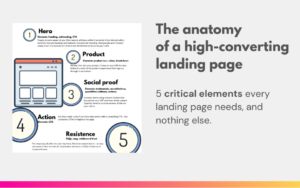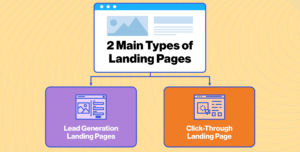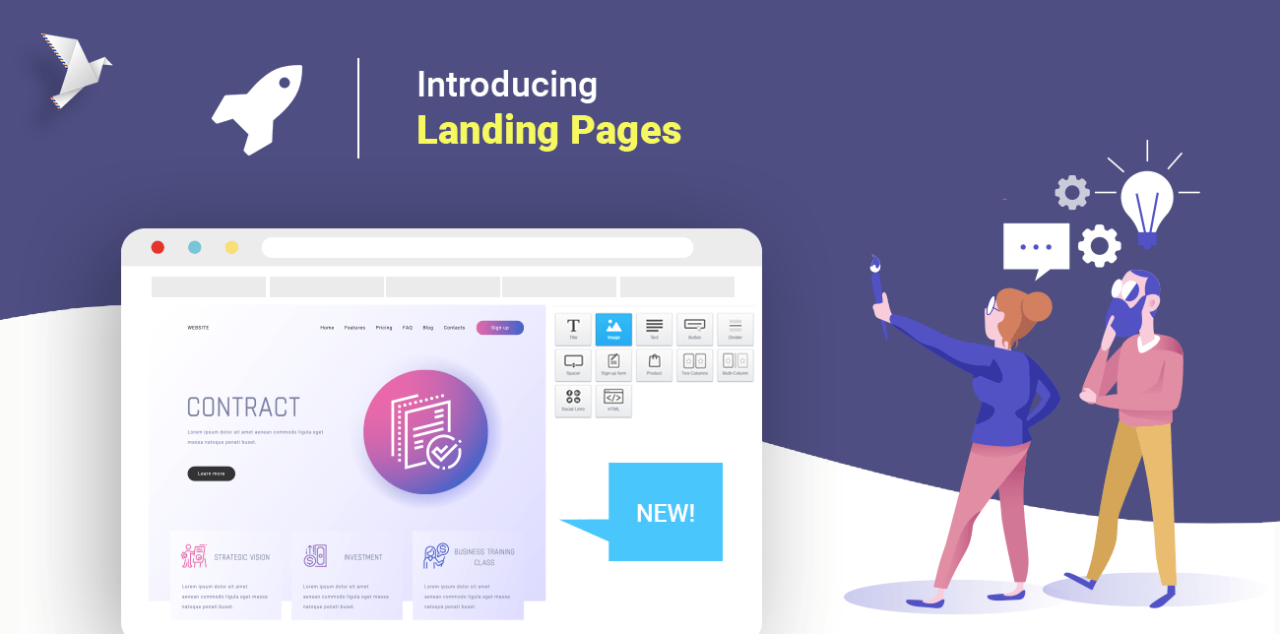A well-crafted landing page is the key to unlocking the full potential of your online marketing efforts. It’s the first impression that makes a lasting impact, the make-or-break moment that determines whether a visitor becomes a valuable customer. A poorly designed landing page can lead to a dismal conversion rate, leaving your business struggling to stay afloat in a sea of competition. On the other hand, a strategically optimized landing page can be a game-changer, driving conversions, generating leads, and ultimately, boosting your bottom line. But what makes a landing page truly effective? In this comprehensive guide, we’ll dive into the world of landing page optimization, providing you with the expert insights, proven strategies, and actionable tips you need to transform your website visitors into loyal customers.
What is a landing page?
Imagine a website that’s like a crowded party – visitors are wandering around, unsure of what to do or where to go. They might stumble upon a page or two, but ultimately, they’ll leave without taking any action. That’s what happens when you don’t have a dedicated landing page. A landing page is a specialized webpage designed to convert visitors into customers. It’s a focused, distraction-free zone where visitors can take a specific action, such as signing up for a free trial, downloading an e-book, or making a purchase. Unlike a website’s homepage, which is often cluttered with multiple calls-to-action and navigation options, a landing page has a single, clear purpose: to drive conversions. Creating a landing page gives your visitors a clear direction and a compelling reason to take action, increasing the chances of turning them into paying customers. In today’s competitive online landscape, having a well-crafted landing page is no longer a luxury, but a necessity for any business looking to drive real results from their online marketing efforts.
Why are landing pages important?
Landing pages are crucial for several reasons:
- Increased conversion rates: Landing pages eliminate distractions and guide visitors towards a specific action, whether it’s signing up for a newsletter, downloading an ebook, or making a purchase. This focused approach significantly increases conversion rates compared to a generic website page.
- Targeted messaging: Unlike a homepage with broad messaging, landing pages allow you to tailor your content and visuals to a specific audience and campaign. This personalized approach resonates more effectively with visitors and compels them to take action.
- Measurable results: Landing pages enable you to track visitor behavior and measure campaign success through analytics tools. You can see how many visitors convert, what elements resonate most, and use this data to optimize your landing pages for even better results.
Key elements of a high-converting landing page

A high-converting landing page is like a well-oiled machine, designed to effortlessly guide visitors towards a specific action. At its core, a successful landing page is built around a few key elements that work together in harmony to drive conversions.
- Compelling headline: Grab attention with a clear and concise headline that speaks directly to the visitor’s pain points or desires.
- Benefit-oriented content: Highlight the benefits of your offer and explain why someone should care. Focus on how your product or service solves their problems or improves their lives.
- Strong Call to Action (CTA): Tell visitors exactly what you want them to do, whether it’s “Download Now,” “Subscribe Today,” or “Add to Cart.” Make the CTA button prominent, easy to find, and visually appealing.
- High-quality visuals: Images, videos, and infographics can significantly improve engagement and retention on your landing page. Use visuals that are relevant to your offer and visually appealing.
- Social proof: Testimonials, logos of trusted partners, and customer reviews can build trust and credibility, encouraging visitors to convert.
- Mobile-responsiveness: In today’s mobile-first world, ensure your landing page is optimized for all devices, offering a seamless user experience across smartphones, tablets, and desktops.
Types of landing pages

When it comes to creating a landing page that drives conversions, it’s essential to understand the different types of landing pages that can be used to achieve your goals. They come in various forms, each suited for specific goals:
- Lead capture pages: Designed to collect visitor information (email addresses, phone numbers) in exchange for a valuable offer like an ebook, webinar, or discount code.
- Click-through pages: Used in email marketing campaigns, these pages provide more details about a particular offer or promotion mentioned in an email.
- “Coming soon” pages: Build anticipation and generate interest for a new product launch or website redesign.
- Viral landing pages: These pages prioritize social sharing to generate buzz and organic traffic. They often incorporate features like eye-catching visuals, gamified elements (like contests or giveaways), and social sharing buttons to encourage visitors to share the page with their networks.
- Long-form sales pages: In contrast to concise lead capture pages, long-form sales pages delve deeper into the product or service. They often include detailed descriptions, explainer videos, case studies, customer testimonials, and address potential objections visitors might have. This in-depth approach aims to educate, persuade, and ultimately convert visitors into paying customers.
Here are some additional types of landing pages you might consider mentioning:
- Un-subscription landing pages: While the goal is typically to retain subscribers, these landing pages can be designed to gather valuable feedback on why someone is unsubscribing from your email list.
- Thank You pages: These pages appear after a visitor converts on your landing page, expressing gratitude and potentially offering additional resources or next steps.
How to optimize your landing page for maximum conversions
The moment of truth has finally arrived – your visitor has landed on your page, and it’s now up to you to convince them to take the desired action. This is where the art of optimization comes into play. A well-crafted landing page is like a perfectly choreographed dance, where every element works in harmony to guide the visitor towards conversion. To achieve this, you need to focus on the key elements that drive conversions. First, your headline must be attention-grabbing and clearly communicate the value proposition. Next, your visuals should be compelling and relevant, helping to break down any barriers to conversion. Your copy should be concise, scannable, and free of distractions, making it easy for visitors to understand the benefits of your offer. And, of course, your call-to-action (CTA) must be prominent, actionable, and irresistible.
Common landing page mistakes to avoid
As you embark on the journey to create a high-performing landing page, it’s crucial to be aware of the common mistakes that can derail your conversion efforts. A well-crafted landing page is not just about aesthetics; it’s about strategically guiding your visitors towards a specific action. Unfortunately, many marketers fall prey to pitfalls that can lead to a disappointing conversion rate. From cluttered designs to unclear calls-to-action, these mistakes can be detrimental to your campaign’s success. Some of the most common landing page mistakes to avoid include slow loading times, too much text, and lack of mobile optimization. Additionally, failing to establish trust with your visitors, using generic or low-quality images, and not providing a clear value proposition can also hinder your conversion rates.
Advanced landing page strategies for maximum ROI
Taking your landing page to the next level requires a deep understanding of the nuances of human psychology, cutting-edge design principles, and a dash of creativity. Advanced landing page strategies are designed to maximize your return on investment (ROI) by leveraging the latest trends and technologies to create an immersive, personalized, and persuasive experience for your visitors. From incorporating AI-powered chatbots to using dynamic, real-time content personalization, these strategies are designed to push the boundaries of what’s possible with landing page optimization. The power of social proof, scarcity, and urgency creates a sense of FOMO (fear of missing out) that drives visitors to take action. Additionally, using advanced analytics and A/B testing tools, you can identify and optimize every aspect of your landing page, from the hero image to the calls-to-action, to ensure that every element is working in harmony to drive conversions.
In conclusion, landing pages are powerful tools for maximizing your digital marketing efforts. By understanding their purpose, key elements, and optimization strategies, you can create landing pages that convert visitors into valuable leads and paying customers. So, the next time you launch a campaign or promotion, remember – a well-crafted landing page can be your launch-pad to conversion success.
